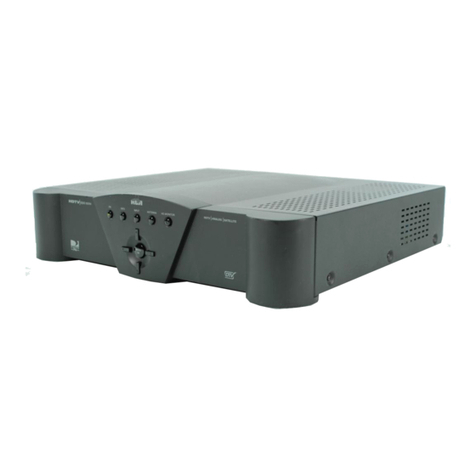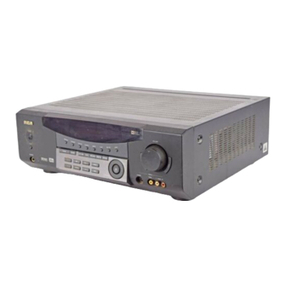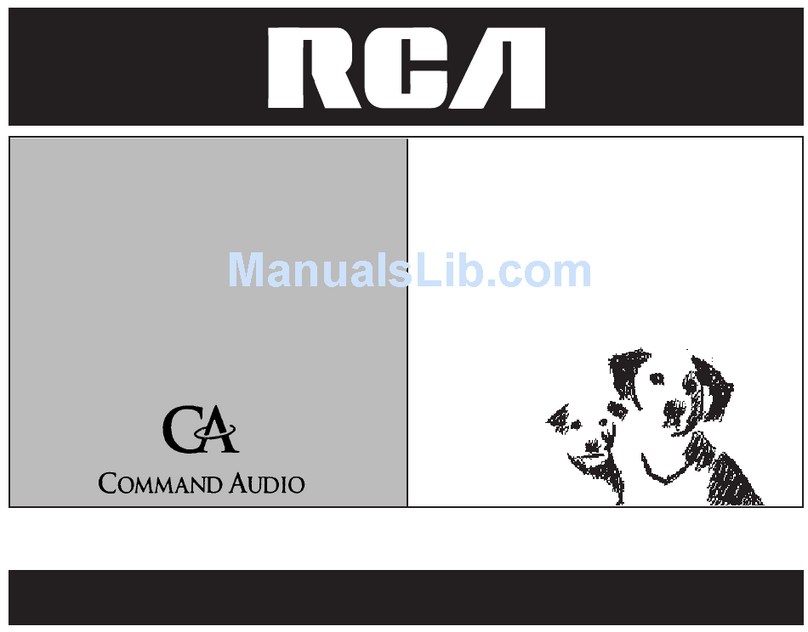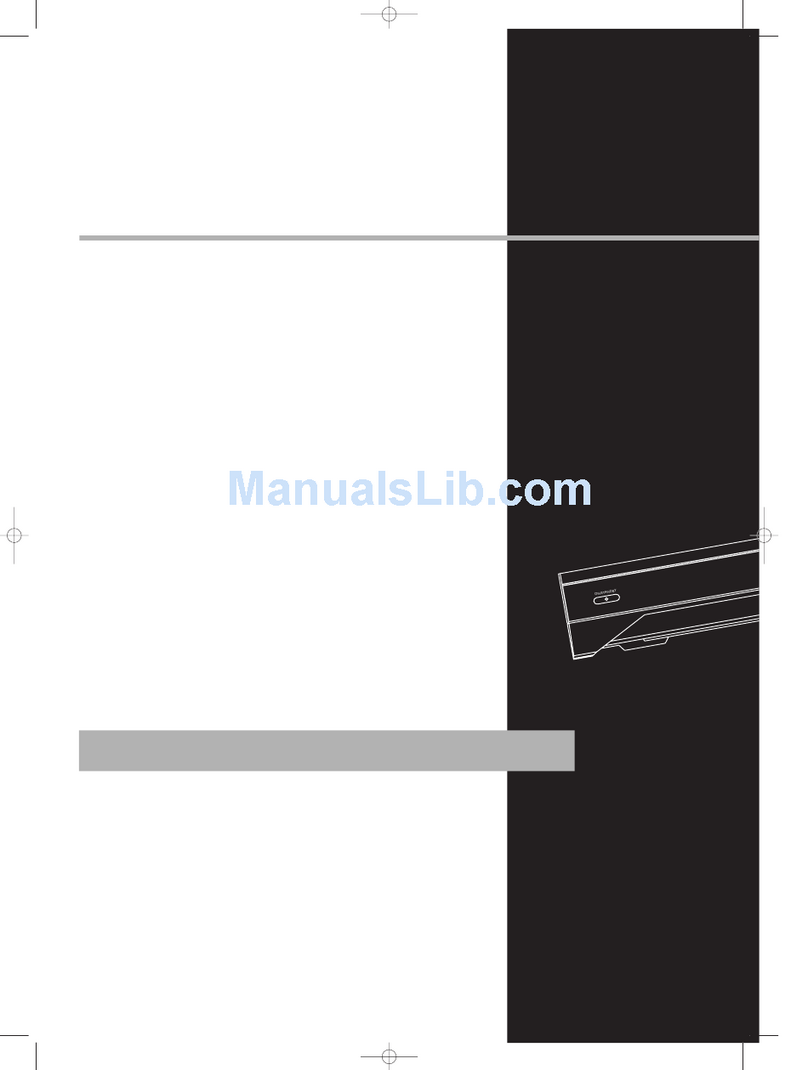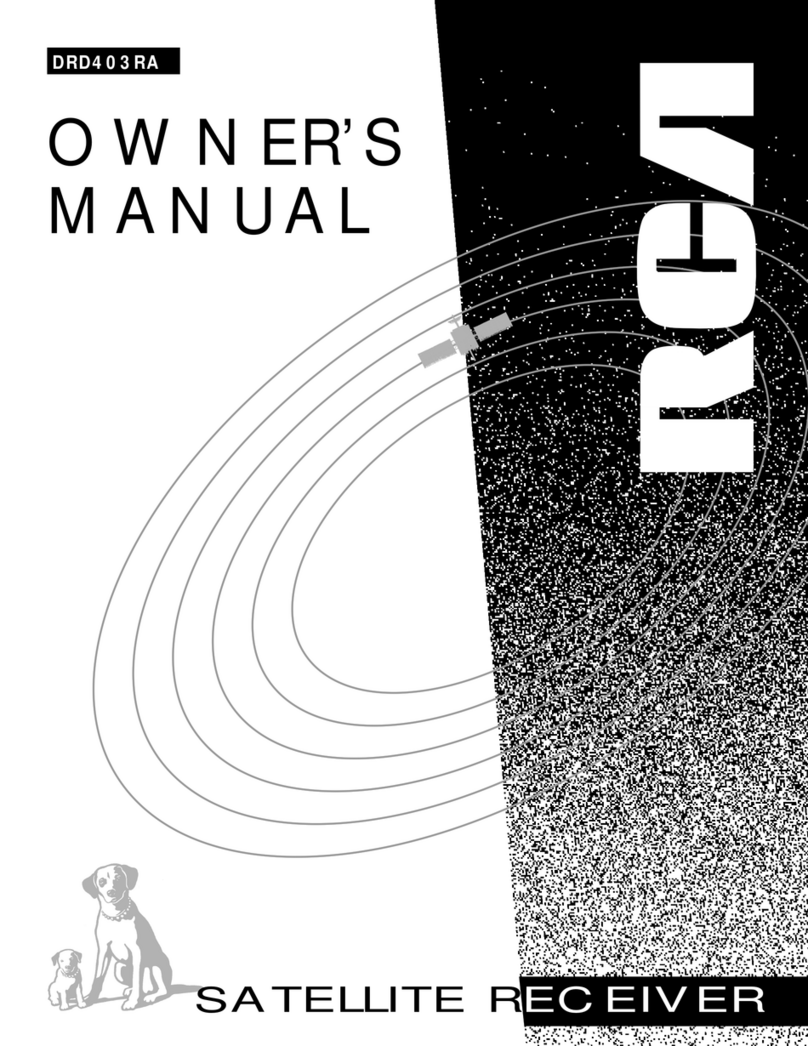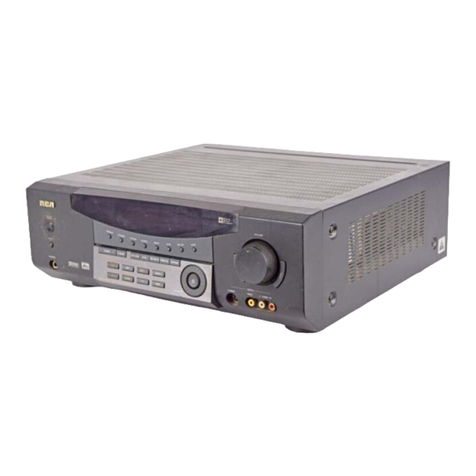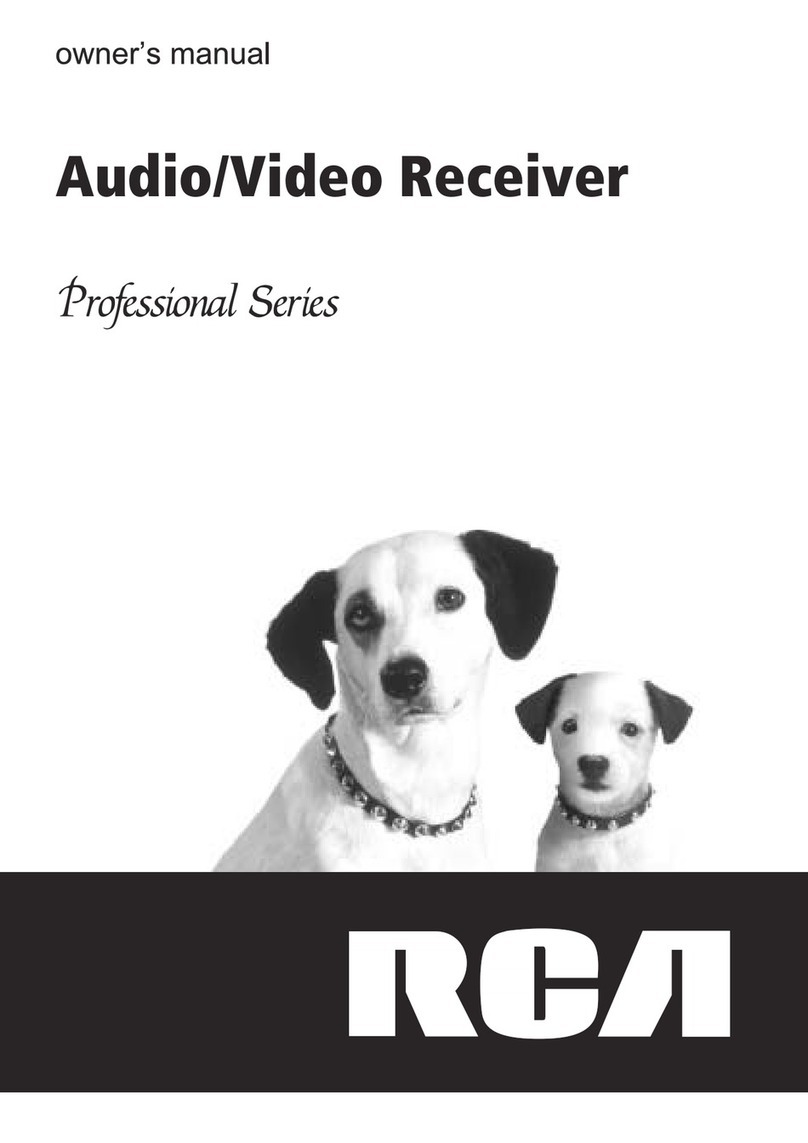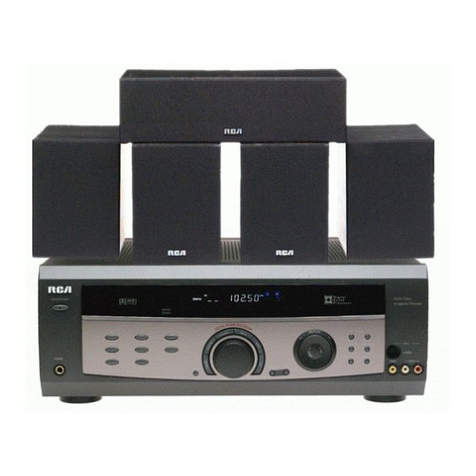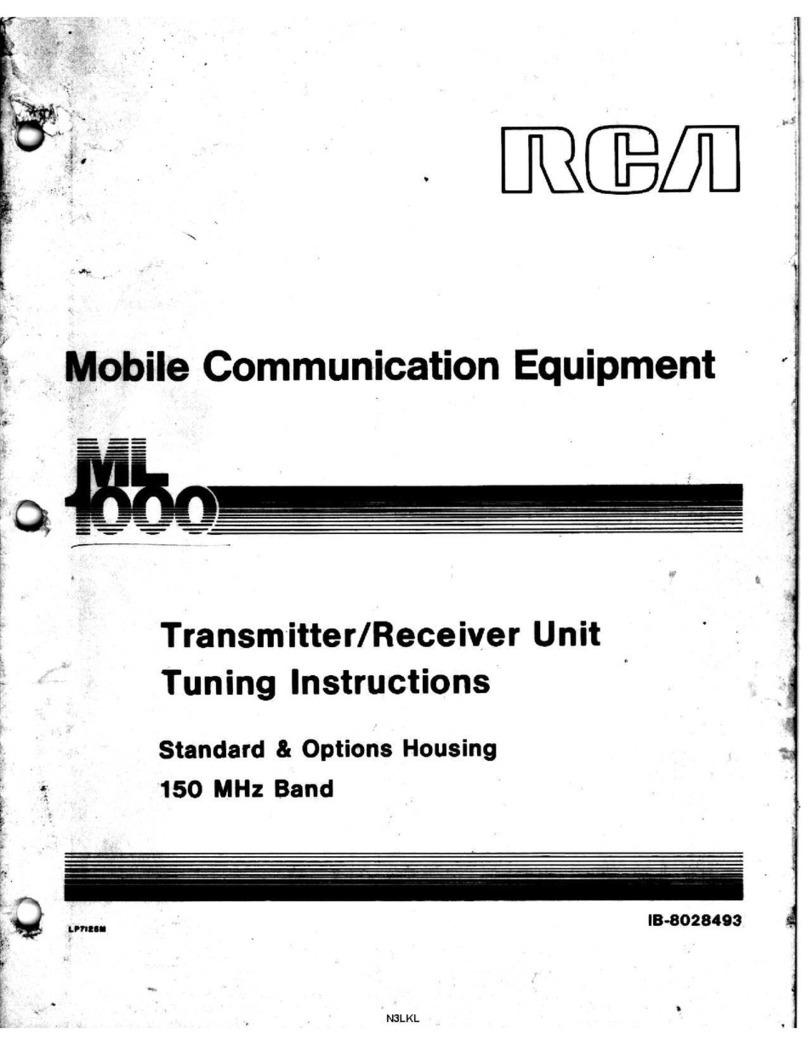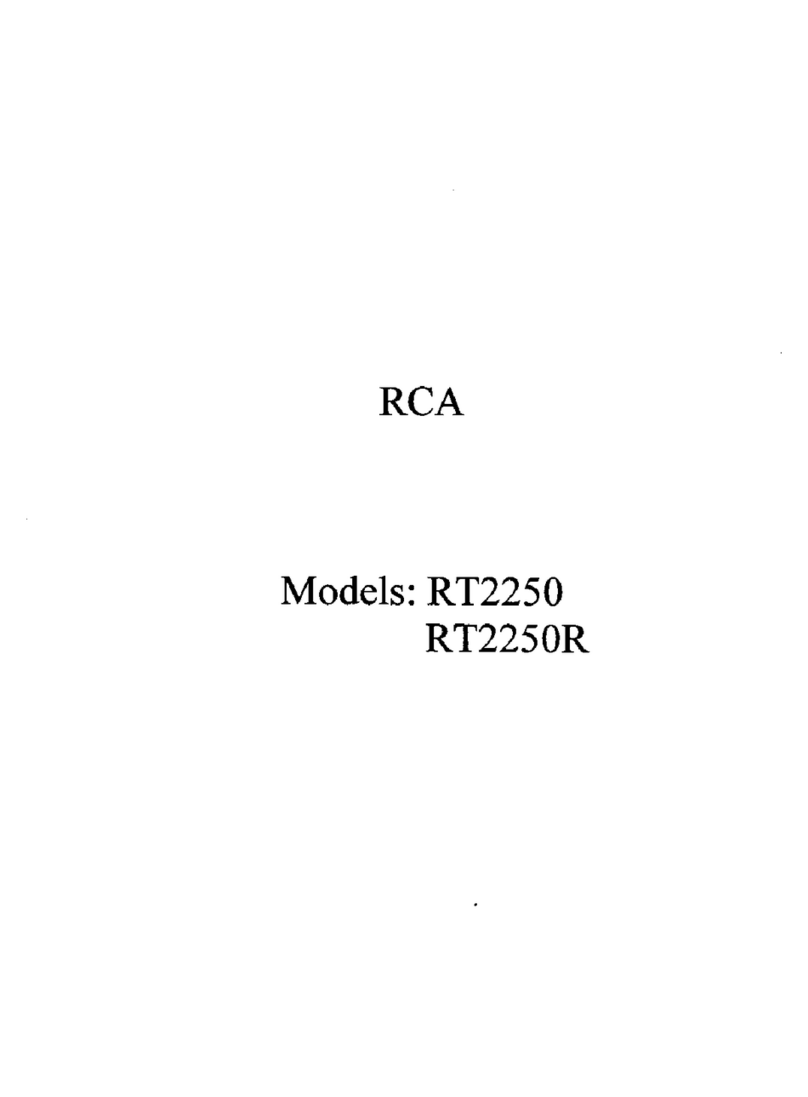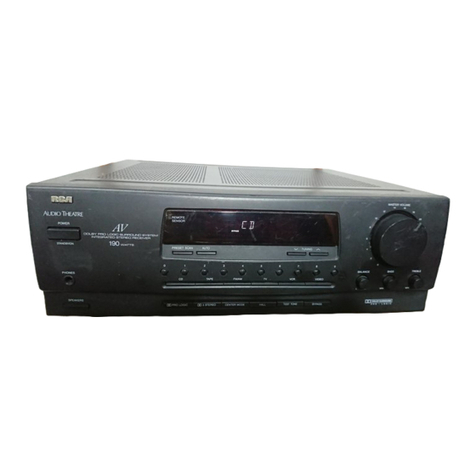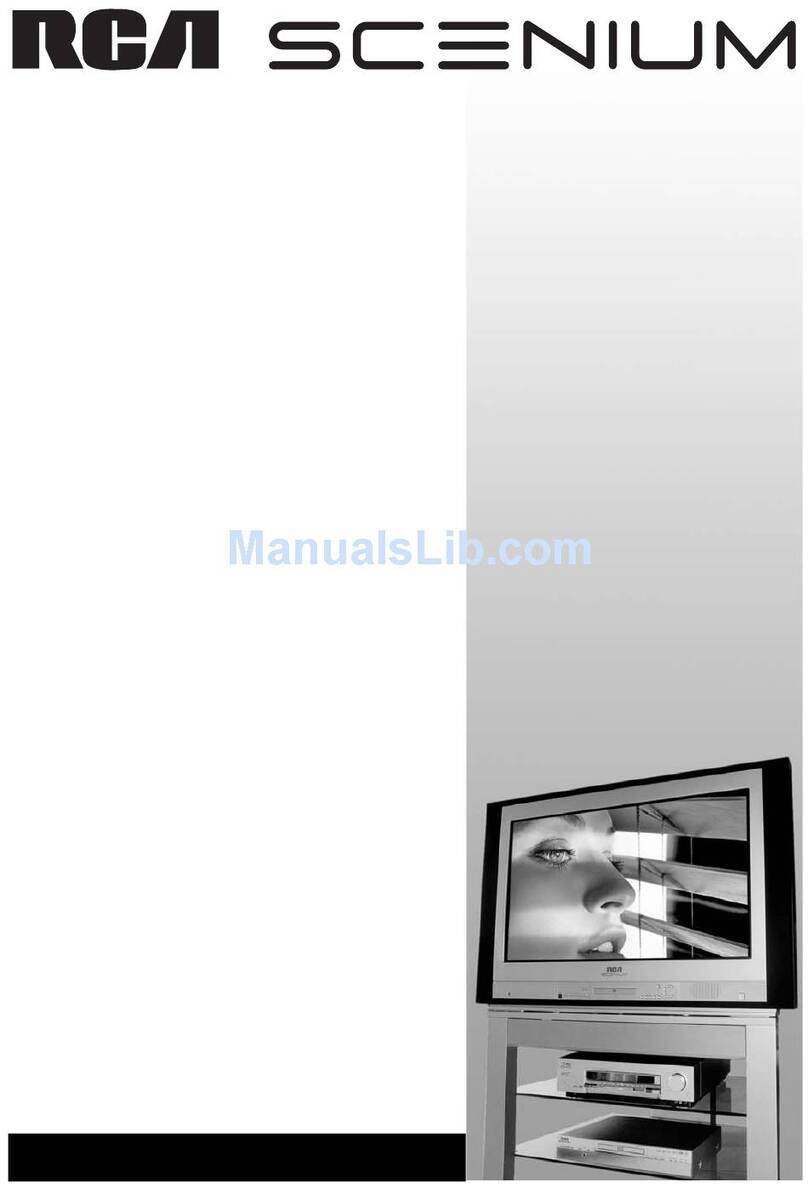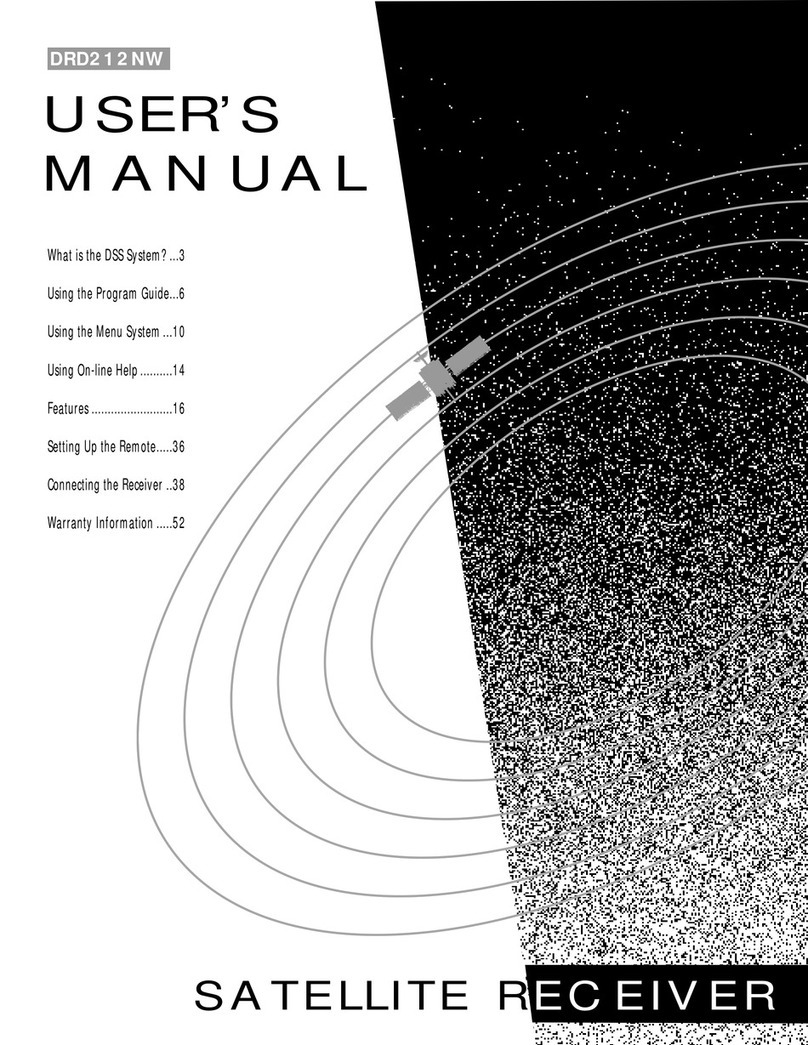
If a transmission line or balanced input is used,
the link should be opened and the line con-
nected to terminal "A" and the center terminal.
Protection against damage due to high voltages
across the antenna coil primaries is provided by
a gas gap protector (Type 991 Valve). This
protector will break down with an applied
potential of approximately 50 Volts R.M.S.
2.3 R.F. Amplifier:--The
R-F Amplifier is designed
to provide ample selectivity ahead of the first
detector for minimizing cross modulation and
blocking effects from strong interfering signals
and for obtaining a high degree of image signal
suppression. The amplification is adjusted to
provide optimum signal-to-noise ratio by making
noise contributions of circuits following the first
valve negligible in comparison with the noise
contributed by the first R-F grid circuit; that is,
each tuned circuit in the receiver contributes
some noise voltage, but by making the gain of
the first valve as high _as practicable, the noise
contributed by succeeding circuits is unimportant.
2.4 Band Spread:--The
mechanical band spread
with single control knob enables the operator to
tune quickly to a previously logged station. The
log scale on the main dial and the separate ver-
nier dial provide for exact logging and tuning.
2.5 First Heterodyne Oscillator:
The first hetero-
dyne oscillator is aligned to track with the R-F
Amplifier at 735 kc higher than the signal fre-
quency, thus producing a 735 kc intermediate
frequency in the first detector plate circuit
which is amplified further in the I-F stages. The
oscillator voltage is regulated by the Type VR-
150 regulator valve to provide maximum fre-
quency stability under conditions of variations
in power supply voltage.
2.6 Intermediate Frequency Crystal Filter:
The first
detector plate circuit is tuned to the intermediate
frequency and a balanced link circuit is used to
couple the first detector plate and first I-F grid
circuits. A 735 kc crystal is connected in one
arm of the link circuit by the selectivity switch
and a neutralizing capacitor is connected in the
other. The impendance of the coils in the link
circuit are designed so that the crystal selectivity
characteristic is not impractically sharp. The band
width at two times resonant input may be ad-
justed to 550 cycles, 2000 cycles, 4,000 cycles,
8000 cycles, or 16,000 cycles. For this adjustment
see "Operation".
2.7
Intermediate Frequency Amplifier: —
Three
stages of I-F amplification are used; Type 6SG7
valves are used in all stages and a Type 6H6
valve is used for AVC and second detector.
The first I-F transformer has its primary and
secondary tuned, and is coupled through the
crystal filter link. The second and third I-F
transformers are composed of four tuned cir-
cuits each. These circuits are varied in coupling
by the selectivity switch. The fourth I-F Trans-
former has two tuned circuits.
The third I-F stage is not connected to the
AVC nor to the manual volume control so that
a good AVC characteristic with little overload
distortion is obtained. This also permits the CW
oscillator to be coupled to the grid circuit of
this stage,
2.8 Second Heterodyne Oscillator: —
The second
heterodyne (CW) oscillator is a triode Type
6J5 valve which is electrostatically coupled to
the final I-F stage. A panel control is provided
by means of which the frequency of the hetero-
dyne oscillator and resultant audio beat note
may be varied.
Particular care has been taken in the design of
harmonics.
2.9
Automatic Volume Control:- -The
AVC voltage
is obtained from the second detector, a Type
6H6 valve. A variable delay is obtained depend-
ing on the setting of the R-F gain control.
The second heterodyne (CW) oscillator ex-
citation voltage is just lower than the AVC
diode bias voltage so that it does not decrease
the sensitivity of the receiver.
2.10 Manual Volume Control:—Two
manual vol-
ume controls are provided: an audio gain con-
trol which is employed when the AVC is in
use, to obtain the desired output level, and an
R-F gain control.
2.11 Noise Limiter:—The
noise limiter circuit utilizes
a Type 6H6 valve and limits the noise inter-
ference to 100% modulation and to continuously
lower percentages down to any modulation
whatsoever, determined by the setting of the
noise limiter control.
A noise limiter switch in conjunction with AVC
provides for use of the noise limiter on CW or
on modulated reception when interference is
present.
2.12 Output Valve: —
The Type 6V6GT/G output
valve is resistance coupled from the A-F ampli-
fier, a Type 6SJ7 valve, and operates into an
output transformer which has taps for matching
into a 2.5 ohm load, or headphones. Terminals
are provided on the rear apron for each of these
load impedances. The output from the 2.5 ohm
tap is fed directly to the 2.5 ohm output ter-
minal, while the output from the 20 ohm tap is
fed to the 20 ohm output terminal and also to
a
jack mounted on the panel. With the phone
plug inserted into the jack, the phones are
across the 20 ohm output and a load resistor,
R-56, provides correct matching for the valve
and reduces output supplied to the headphones.
the circuit
minimize oscillator
constants to
[51


